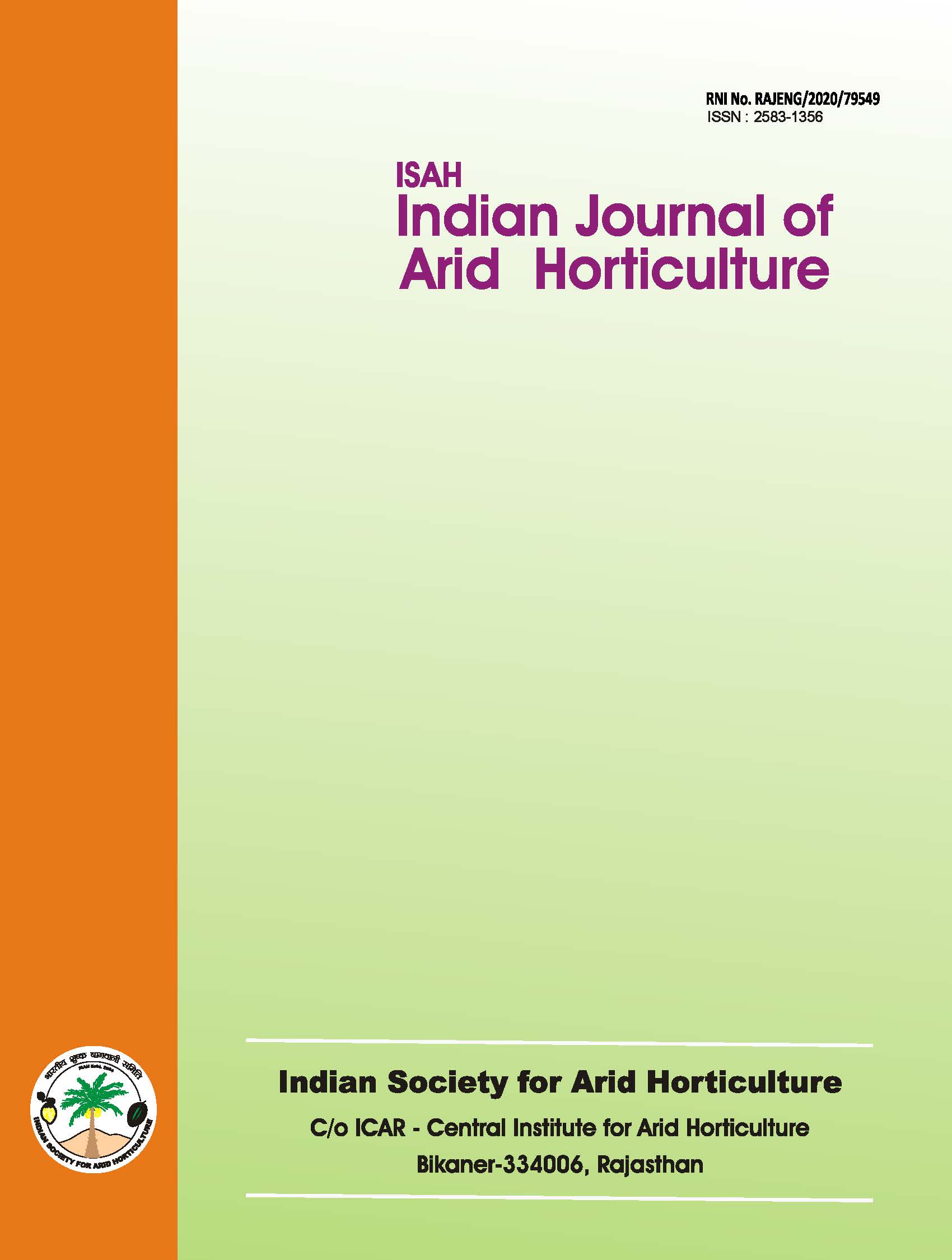Management of Fruit Borer, Meridarchis scyrodes Meyrick (Carposinidae: Lepidoptera) in Ber (Zizyphus mauritiana)
Keywords:
Meyrick, toleranceAbstract
Zizyphus mauritiana, commonly known as ber, belongs to the family Rhamnaceae. It is an important fruit crop cultivated across India, with major growing regions in Madhya Pradesh, Bihar, Uttar Pradesh, Punjab, Haryana, Rajasthan, Gujarat, Maharashtra, and Andhra Pradesh. Ber is a drought-hardy fruit tree that can withstand saline and brackish water, making it particularly well-suited for arid regions. Due to its xerophytic traits and drought tolerance, it is often referred to as the "king of fruits" in arid areas. Among the many pests that attack ber, with 33 families identified as pests (Nair, 1986), the fruit borer Mungia mularachis (Meyrick) is particularly destructive, causing up to 70% yield loss during severe infestations (Karuppaiah, 2013). The pest damage has been most prominently observed in southern and western India (Pareek and Nath, 1996; Sonawane and Dorge, 1973). A field survey conducted in Kamalaka indicated that the fruit borer is a major pest in ber crops (Balikai, 1999). The reddish larvae of the fruit borer burrow into the fruit, feeding on the pulp and leaving visible faecal frass inside, which significantly affects fruit quality. The adult moths are small and dark brown in color. Given the significant crop losses caused by this pest, this study aims to evaluate newer insecticides and botanicals that are effective in controlling the fruit borer and improving ber crop yields.Downloads
References
Adiroubanc, D. and Raghuraman, K. (2008). Plant products and microbiological formulations for the management of Berijala shoot and fruit borer, Ucinodera orbomalis (Guenée). Journal of Biopesticides, 1(2), 124-129.
Balikai, R. A. (1999). Pest scenario on ber (Zizyphus mauritiana Lamarck) in Karnataka. Pest Management in Horticultural Ecosystems, 5(1), 67-69.
Karuppaiah, V. (2013). Managing fruit borer menace on ber (Zizyphus mauritiana Lamarck). Central Institute for Arid Horticulture, Bikaner, India, 1-5.
Nair, M. R. G. K. (1986). Fruit crops - Ber. In Insect and Mites of Crops in India, ICAR, New Delhi, p. 194.
Pareek, O. P. and Nath, V. (1996). Ber. In Coordinated Fruit Research in Indian Arid Zone - A Two Decade Profile (1976-1995), National Research Centre for Arid Horticulture, Bikaner, India, p. 30.
Ravi, M., Santhanam, G. and Sathiah, N. (2008). Eco-friendly management of tomato fruit borer, Helicoverpa armigera (Hubner). Journal of Biopesticides, 1(2), 134-137.
Sonawane, B. R. and Dorge, S. K. (1971). Biology and control of fruit borer (Meridarchis scyrodes Meyrick) on ber. Poona Agricultural College Magazine, 61(1/2), 14.
Sudheer, J. M. and Subramanyam, K. (2001). Preliminary study on the management of ber fruit borer, Meridarchis scyrodes Meyrick (Carposinidae, Lepidoptera). Pest Management in Horticultural Ecosystems, 7(1), 79-81.

